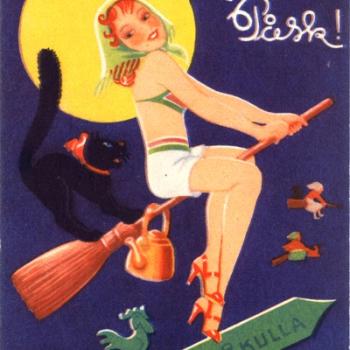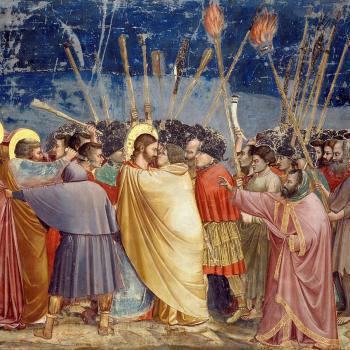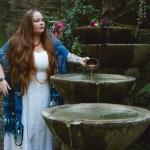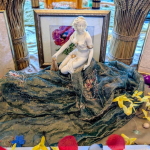
What does it mean to practice witchcraft? Rather, before that we should ask another question; what is witchcraft? What is it for.
My mentor, who was a genuine and committed student of Alex Sanders, often quotes Sanders as saying that he “didn’t teach witchcraft, he taught magic”, and therein lies a pertinent distinction often lost in today’s Wiccan milieu, popularised beyond recognition through the surge of social media (#witchesofinstagram).
Within the teachings passed to me so far from my teacher in this, emphasis is placed upon our interaction with the cosmic forces and the energies worked, accessed and activated, with ‘clear sight’ and a comprehension of symbolic language. In this, there is a god and a goddess, but to surmise that this is simple religion is to miss the mark. The Wicca as taught me is a path which demands that “properly prepared we must always be”, whilst we strive to “keep pure your highest ideal”. Never has a law of threefold return been mentioned, and of our personal ethics in approaching the mysteries these two phrases encapsulated some part of the path we tread in earnest, with caution against the dangers of introspection.

While my craft tutor may recognise the seasonal sabbats and the key symbolic mythos of which they are a part, it is the forces and spirits with which he might work if necessitated that are emphasised. That is to say, the quickening that advances its pace at May’s Eve and indulges the spring surge in wanton abandon and carefree celebration may be used if and when required. That is not to suggest that we may not enjoy a maypole dance, frolic with the Morris Men and Mummers, bursting with myth and symbolism, or the ecstatic feativities of the tide. But to construe that in and of itself as witchcraft is to misunderstand what witchcraft was, and still is, among traditionals (be they Wiccan or otherwise), and its function and use; the question of ‘means becoming the ends’ raises its head.
If we take the example of May’s Eve, it is a time of rapidly accelerating increase, of fecundity, the increased pulse of Venusian lust, of wanton abandon, of merry making, advancing day and light. Enfleshing the tide are the folk traditions, myths and symbols which accompany and have accumulated over time in the national psyche, as an overarching group soul of a people. Myths gathered over time tell of the union of the divine Star Goddess and her earthly consort, adorned in the verdant raiments of fertility and life, the elfin green of the otherworld. A deep understanding, appreciation and submersion in the myth and symbolism of the May allow us to better work with those forces, thus ensuring better success in our works.
Witnessing a revival in the modern pagan communities, it is heartwarming to see people engaging in the sense and feel of the natural cycle, becoming a little more sensitive to the turning wheel and it’s inherent energy, of increase or diminishing light and life. In working with and through the markers of the year, we become attuned to the cycles of the heavens, the sun and moon and the earthly tides. Once we are keenly aware of the spirits and gods who preside over the realm of these fortresses in time, we may approach them and work with them. Without an understanding of the cycles and rhythms, the bridge and approaches to the castles, how may we traverse the wasteland, the forests and seas and attain to the grail?
To mistake the pagan or folk festivity for the very depth of the mysteries is to shoot for the moon’s reflection. The witch’s sensitivity to these tides and the ‘clear sight’ to not only interpret but utilise the symbolic language does not suggest a celebration, although this form a part of it. Rather, it is the very use of these powers and potencies that the witch accesses, aware that a quickening tide is stronger for works of increase, and a waning tide better suits a rite to diminish. Incorporating the appropriate mythic cycle of the tides, the better to access those worlds and enact the magics which are most needful, thereby attaining mastery over fate by working with, and through, the tides of the seasons.



















